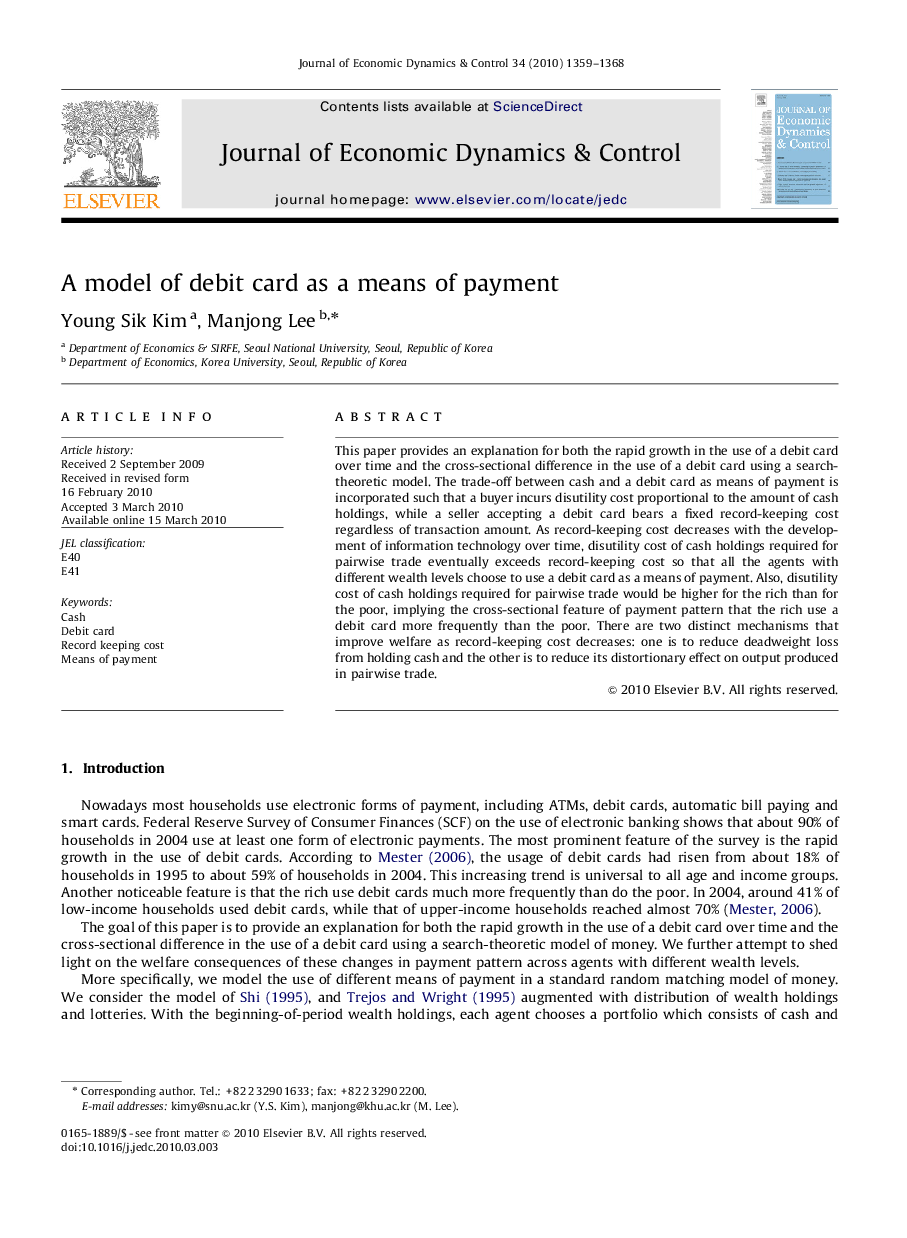| Article ID | Journal | Published Year | Pages | File Type |
|---|---|---|---|---|
| 5099381 | Journal of Economic Dynamics and Control | 2010 | 10 Pages |
Abstract
This paper provides an explanation for both the rapid growth in the use of a debit card over time and the cross-sectional difference in the use of a debit card using a search-theoretic model. The trade-off between cash and a debit card as means of payment is incorporated such that a buyer incurs disutility cost proportional to the amount of cash holdings, while a seller accepting a debit card bears a fixed record-keeping cost regardless of transaction amount. As record-keeping cost decreases with the development of information technology over time, disutility cost of cash holdings required for pairwise trade eventually exceeds record-keeping cost so that all the agents with different wealth levels choose to use a debit card as a means of payment. Also, disutility cost of cash holdings required for pairwise trade would be higher for the rich than for the poor, implying the cross-sectional feature of payment pattern that the rich use a debit card more frequently than the poor. There are two distinct mechanisms that improve welfare as record-keeping cost decreases: one is to reduce deadweight loss from holding cash and the other is to reduce its distortionary effect on output produced in pairwise trade.
Keywords
Related Topics
Physical Sciences and Engineering
Mathematics
Control and Optimization
Authors
Young Sik Kim, Manjong Lee,
